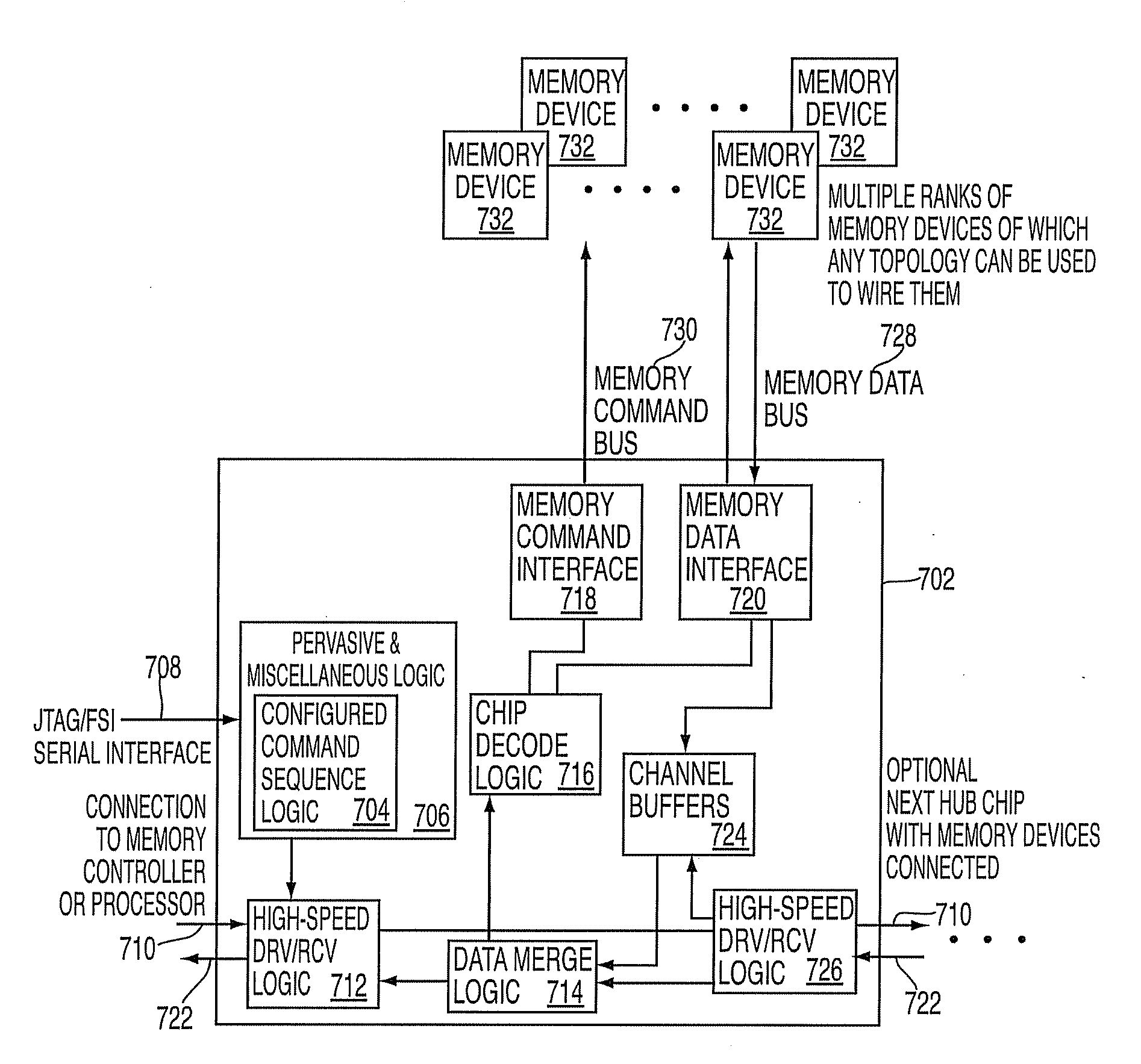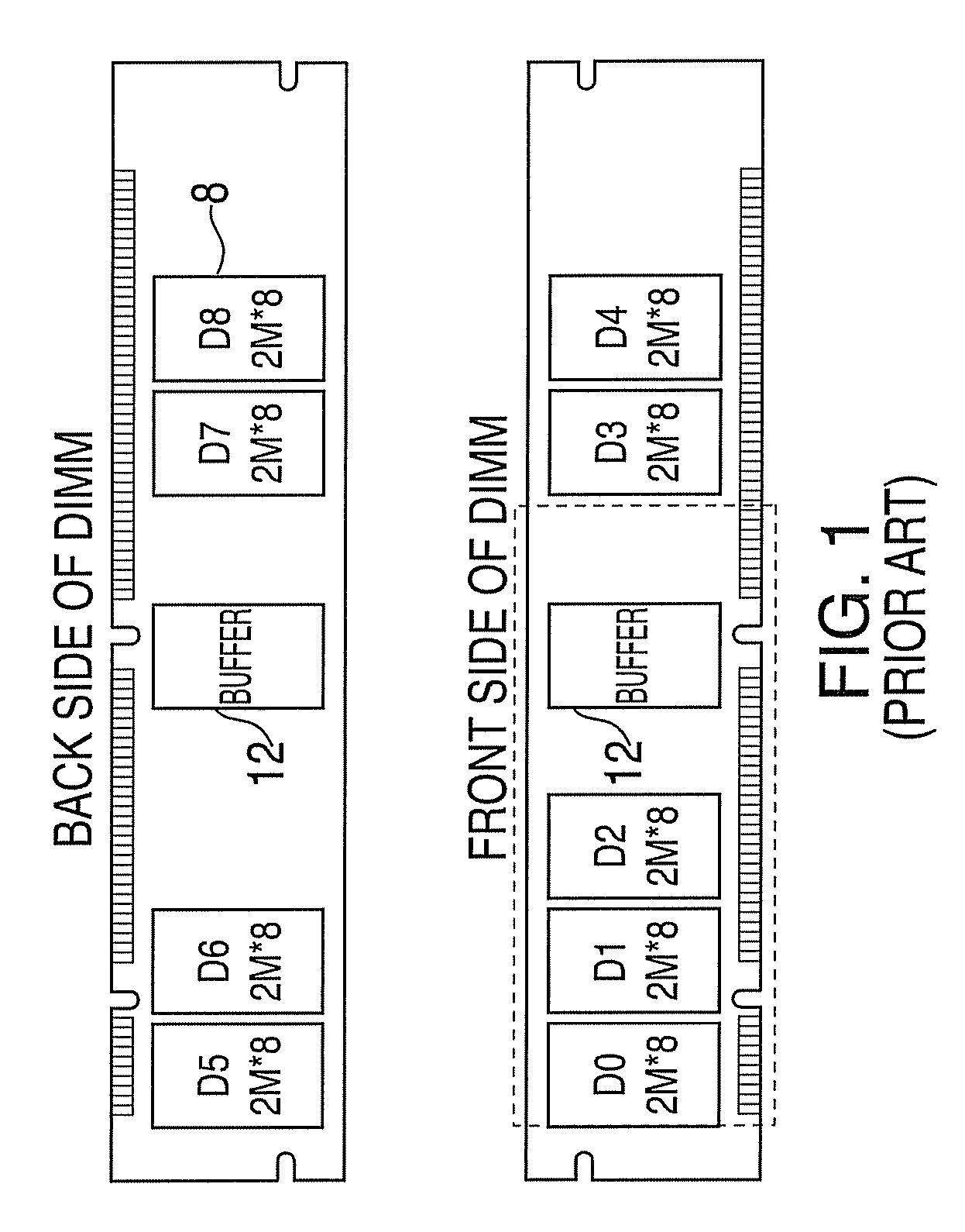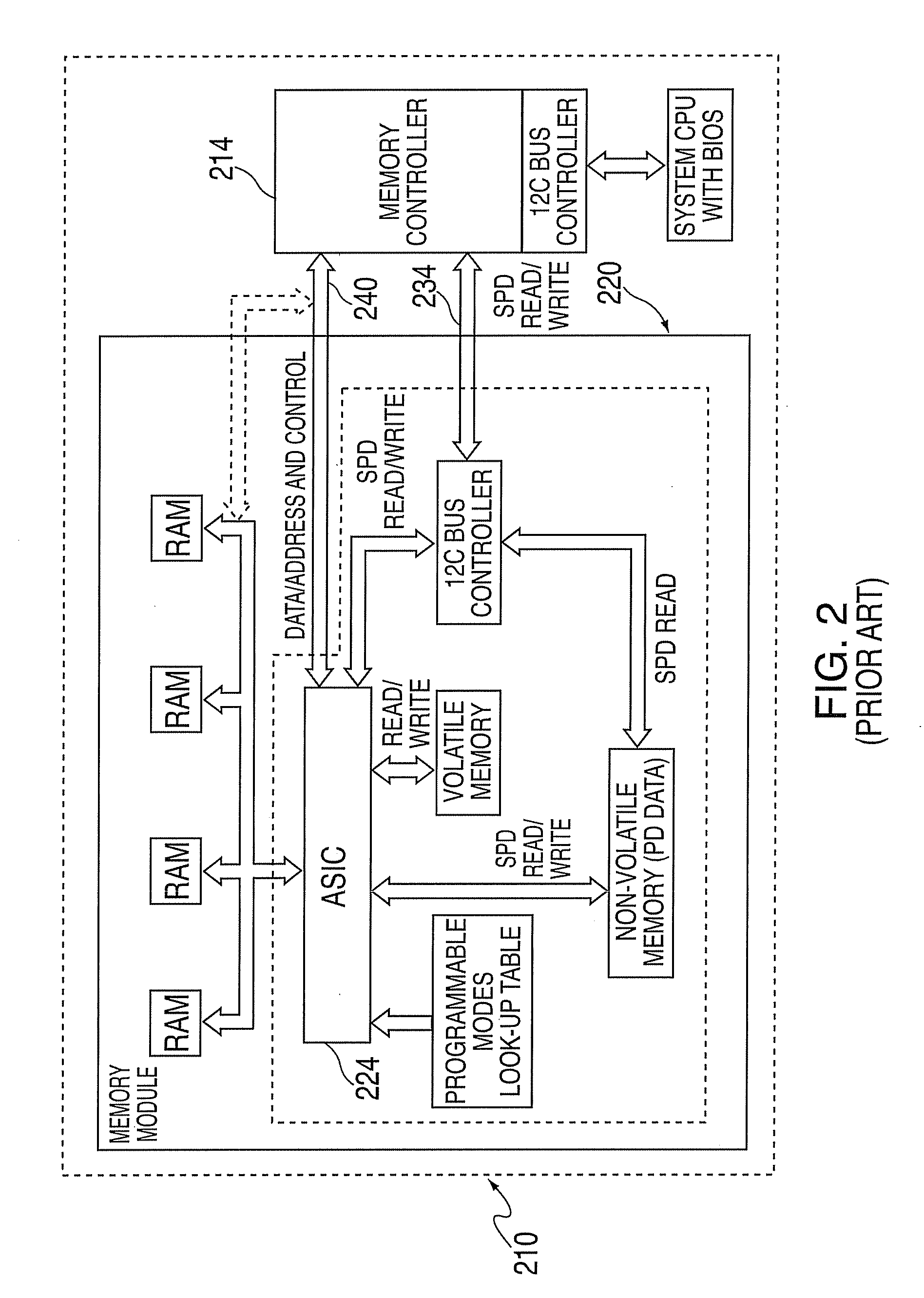System and method for providing a configurable command sequence for a memory interface device
- Summary
- Abstract
- Description
- Claims
- Application Information
AI Technical Summary
Benefits of technology
Problems solved by technology
Method used
Image
Examples
Embodiment Construction
[0035]An exemplary embodiment, referred to herein as configured command sequence (CCS) logic includes a programmable array of storage elements in a memory interface device (MID) to provide a method of executing commands that have been previously loaded into the array. An exemplary embodiment further uses a slow register access interface (e.g. significantly slower than the normal high speed upstream and downstream channels) to write commands and / or data into the storage elements. In an exemplary embodiment, all of the commands and data to be executed by the conventional MID circuitry are encoded exactly as if the information was received from a memory controller / microprocessor (MC / uP) over a high speed link(s); however the information is received using an alternate communication means, such as a serial interface (e.g. joint test action group or “JTAG”, field service interface or “FSI” or similar interface); an untrained high speed link; or another means other than normal transfers ov...
PUM
 Login to View More
Login to View More Abstract
Description
Claims
Application Information
 Login to View More
Login to View More - R&D
- Intellectual Property
- Life Sciences
- Materials
- Tech Scout
- Unparalleled Data Quality
- Higher Quality Content
- 60% Fewer Hallucinations
Browse by: Latest US Patents, China's latest patents, Technical Efficacy Thesaurus, Application Domain, Technology Topic, Popular Technical Reports.
© 2025 PatSnap. All rights reserved.Legal|Privacy policy|Modern Slavery Act Transparency Statement|Sitemap|About US| Contact US: help@patsnap.com



